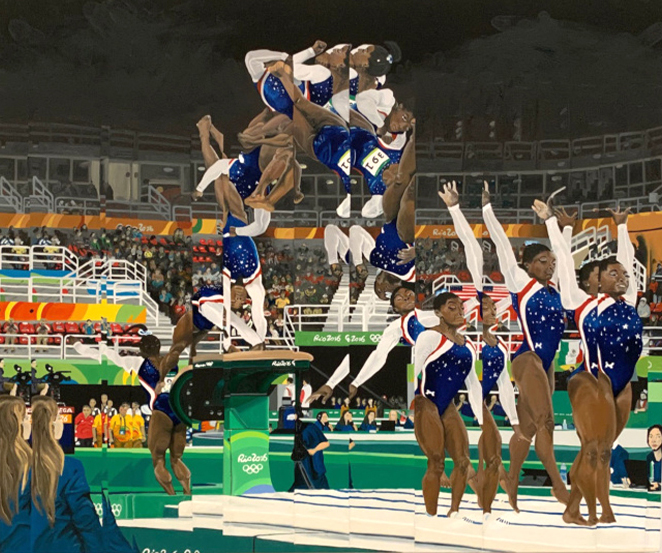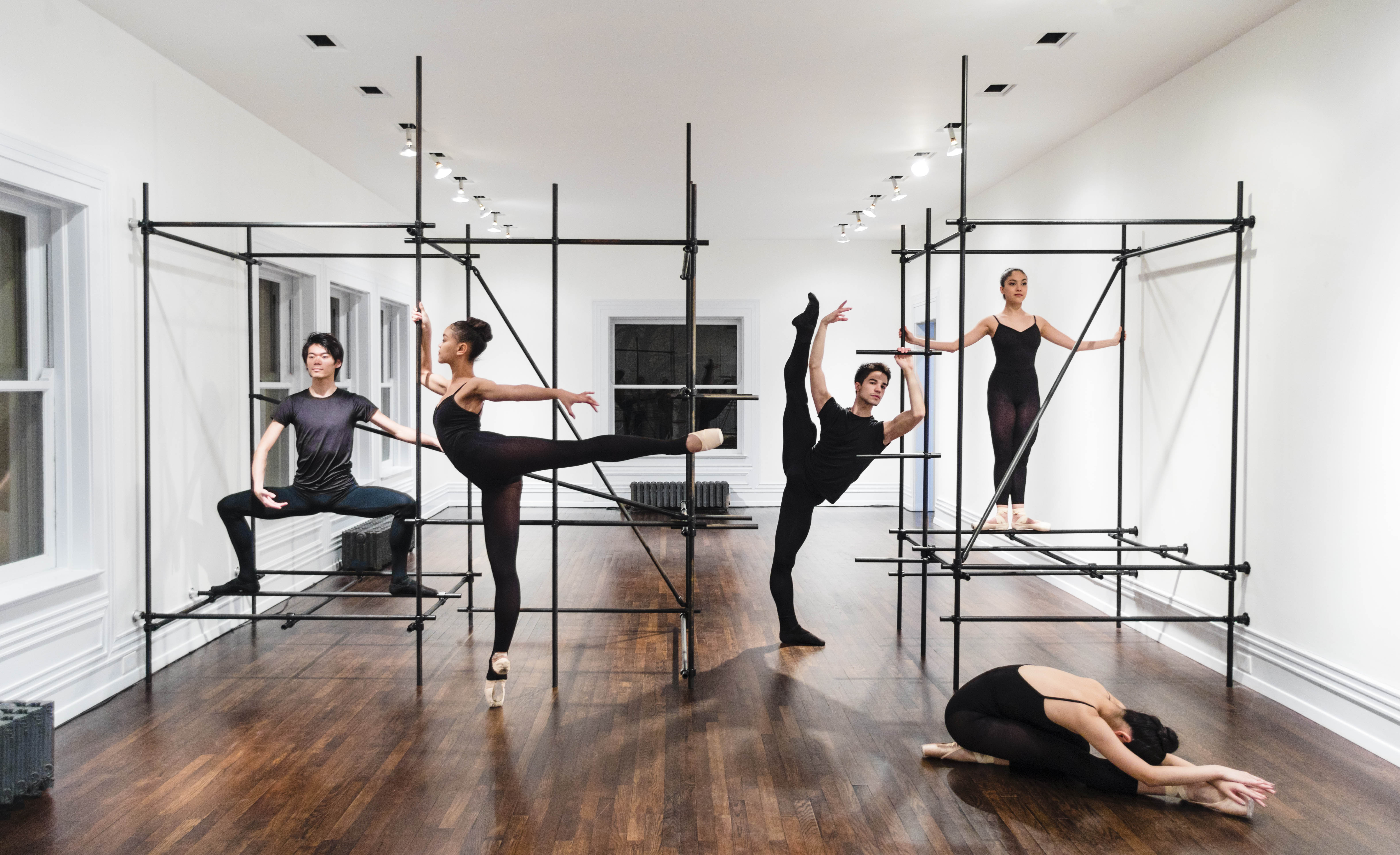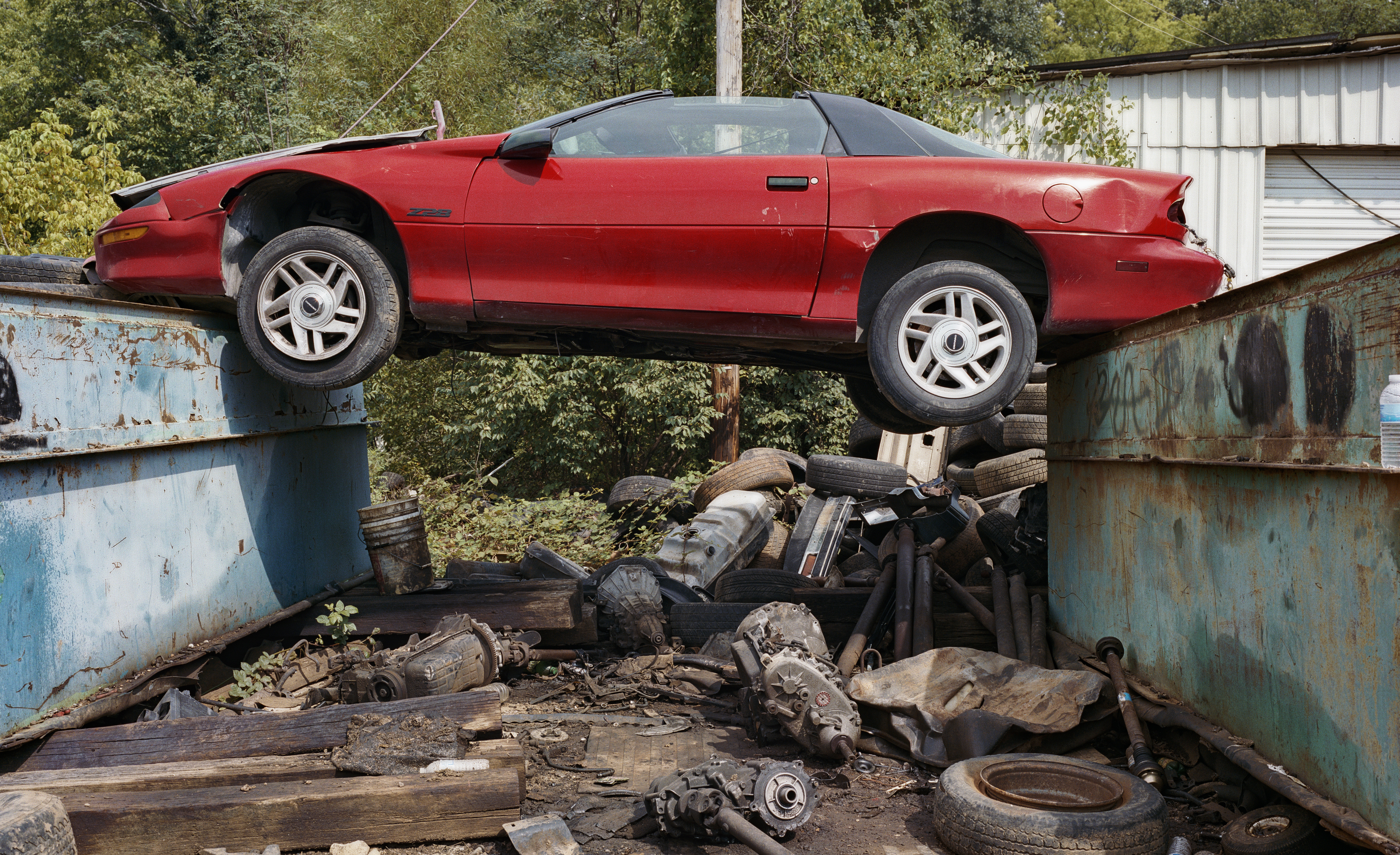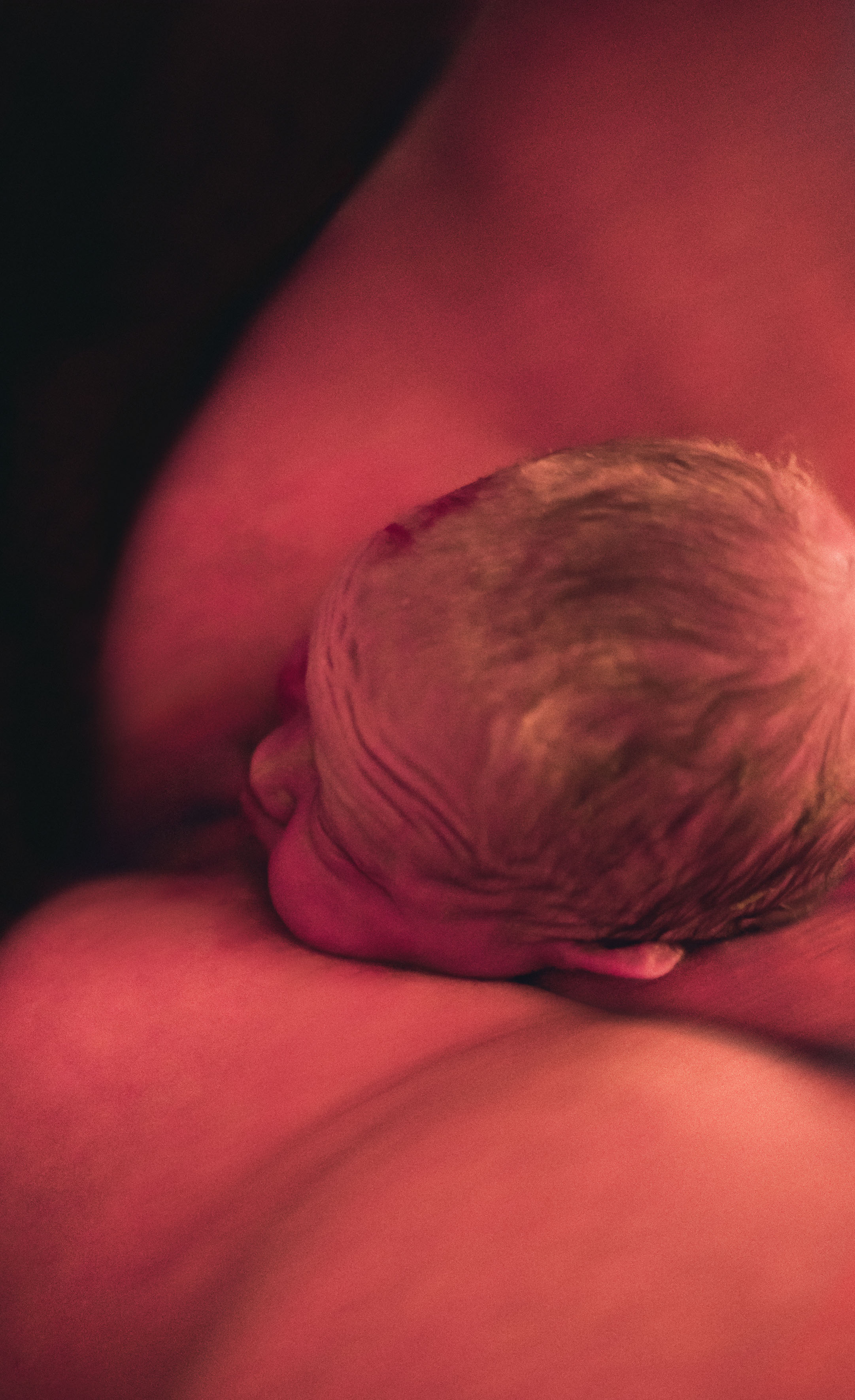
On the seventh floor of the Whitney, where highlights from the collection are displayed, you’ll find rooms filled with historical American landscape and figurative painting, culminating in Jasper John’s iconic Three Flags (1958). Downstairs, in the Biennial, you’ll find much the same thing: pictures of America.
This year’s Whitney Biennial felt not so much like a survey of recent American art, as a survey of America itself, and particularly American blackness. Figures that have come to define the last couple years, or at least to polarize popular opinion, are present as the subjects of artworks: in the basement, tucked away by the coat check, are a pair of Heji Shin’s lush, intimate portraits of Kanye West. Upstairs, archival pictures of the original King of Pop, Michael Jackson, are layered under tropical Ghanaian forests and sparkling night skies by Jackson’s personal photographer from the 1970s and 1980s, Todd Gray. Kota Ezawa’s brief, hand-painted watercolor animation National Anthem renders tense scenes from the beginnings of recent NFL games into a dreamlike sequence. Colin Kaepernick takes the knee. Some players join him, and others don’t. Some sing “The Star-Spangled Banner” proudly, others just stand there with top lips trembling. These are only young men. National Anthem, like the whole exhibition,is a picture of a divided country, but a rather sympathetic and moving one. What’s happened to the American Dream? What’s happened to high-school football stars, to college dropouts, to child pop stars, to reality TV personalities, to modern art? Did the Dream ever really exist?

Donald Trump’s presence is felt in many works, but most notably in Alexandra Bell’s photolithographs of New York Daily Newscovers from 1989, with the pictures screen-printed over, relating to a famous case in which five black teenagers were wrongfully convicted of raping a white female jogger, leading to Trump taking out a full-page ad calling for the restoration of the death penalty. Her work’s an indictment of our president, yes, but perhaps even more of an indictment of our media.
This year’s edition’s other great archvillain, of course, is Warren B. Kanders, the vice chair of the Whitney’s own board of trustees and also an international tear-gas grenade dealer. For their investigative project Triple Chaser (2019), shown here for the first time, Forensic Architecture trained a machine-learning classifier to scour the internet for images of Kanders’ grenades and mapped out all the places they’ve been used against civilians this century: from Gaza, to Ferguson, to Standing Rock, to the Southern border. It’s a powerful work, and it’s admirable that the Whitney was willing to include it, but when I spoke to a friend afterwards he suggested that these kinds of machine-learning image scourers present a much greater danger to society than teargas. “It’s like making a nuclear bomb to raise awareness of uranium,” he said. Everything’s so complicated now! But anyway, it’s good to have Forensic Architecture, who clearly aren’t American, rolling up to this show of American artists to troll the arms-dealing trustee. They should do this at every museum. Which reminds me, at the preview I overheard a preeminent New York art critic telling his friend that the Whitney’s “the weakest of the major museums. That’s why people go after them. Who’s going to go after the MoMA?”

Aside from these explorations of the sorts of dramatic figures that have come to dominate today’s news cycle however, there are also a lot of representations of ordinary American people and places. I can’t remember the last time I saw so much photography in a major show. John Edmonds’s portraits of mostly young black men holding traditional African sculptures celebrate heritage and queerness, for sure, but they’re also just beautiful pictures. It’s good to see some beauty here. A young artist from the Bronx, Elle Pérez, photographs their friends as they transform themselves. One has bruised, puffy yellow eyes and a scar across the neck from surgery. Another carves the word “DYKE” into their thigh in bright bloody letters. These are pictures of suffering and becoming and glory. The show’s full of diverse voices, because America is diverse; more so than anywhere else has ever been in history. We’re all in this shit together.
The whole third floor’s given over to Curran Hatleberg’s documentary photos of everyday life in unnamed, hard-to-identify places he’s visited. A young girl sits in the ruins of a demolished house holding a snake. Teenagers play-fight on a street under a railway bridge somewhere far away. I keep thinking about this picture. Hatleberg’s able to make these scenes of nothing happening look so magical and romantic. Likewise, in Martine Syms’s corner of the show, photographs of suburban car parks, liquor stores and kabob shops obscure sections of a massive orange wall text reading, “PEOPLE WHO AREN’T LOVERS OR FRIENDS OR EXES.” In an accompanying video, her computer-generated avatar wears a T-shirt that reads “To hell with my suffering” on the back, and her voice booms around the sixth floor asking, in a rising tone of exasperation, “Who’s trying to fuck me over right now? Why are they trying to fuck with me!” It’s a fitting chorus for everything.

A floor below, Brendan Fernandes choreographs a slow ballet around a scaffolding frame. His quintet of dancers press their limbs against its leather-coated poles. Behind them the Whitney’s huge windows look out over the grey, rainy city, and the forms of his dancers and scaffold are repeated in Chelsea’s building sites and apartment blocks and the distant skyline. Facing his space is a room full of more contorting, twisting female bodies: Heji Shin’s portraits of crowning babies howling bloody from their mother’s vaginas, Simone Leigh’s surreal bronze busts, and a single painting by Janiva Ellis.

At this year’s Whitney Biennial, like at last year’s New Museum Triennial, the standout piece is by Ellis. She’s painted a vast, wide-open psychedelic landscape in which chimeric, many-limbed figures rip their identities apart and melt back into the dying ground. A journey across a mad, desolate country with blood-red skies. This thing’s the size of a Napoleonic history painting. I used to see Janiva at house parties in Los Angeles a few years ago and didn’t even know she was an artist. She had her first solo show in 2017, and now she’s the star of the Whitney Biennial. Maybe she’s the American Dream.

Downstairs, in the shop, they’re selling “Whitney Biennial” varsity jackets and pennants. I like how relentlessly American everything is this year, and how the curators, Jane Panetta and Rujeko Hockley, have gone for this state-of-the-nation approach. Coming down the staircase, I could see the Statue of Liberty across the foggy harbor in the distance and feel like I was in an F. Scott Fitzgerald story. And here, in the galleries, the Great American Novel has been reimagined as a highly literal, realist, representative exhibition. A portrait of America in all its squalor and disrepair and menace and charm; and one that suggests that, however tumultuous this moment in history might feel, the country’s still rich with beauty and possibility.










 in your life?
in your life?

